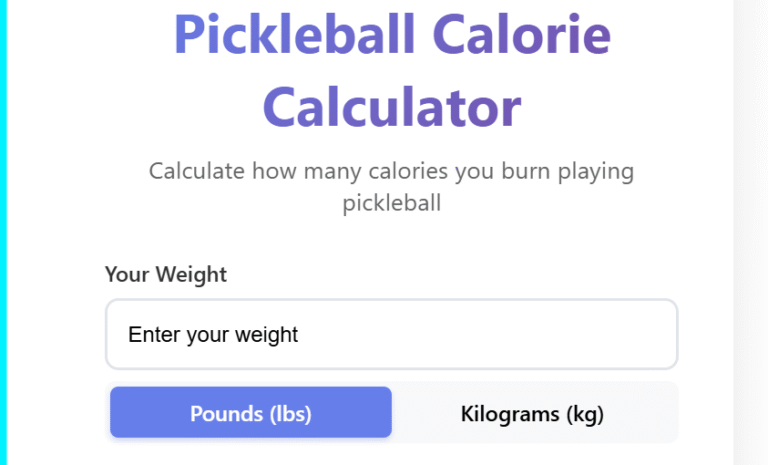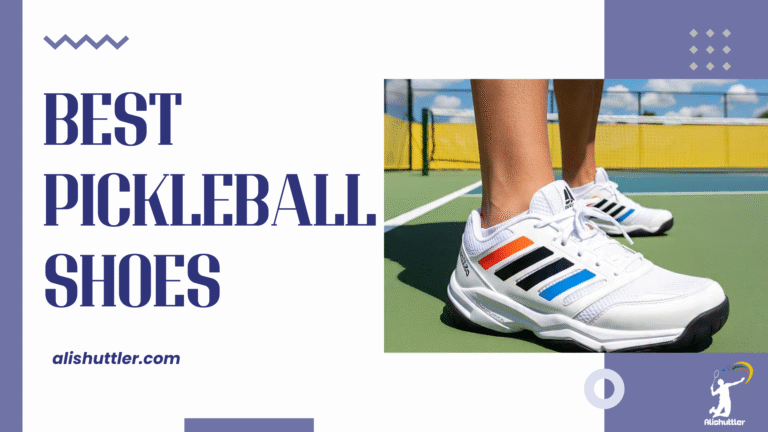Are you curious about the ins and outs of pickleball rules? Ever wondered how to ace your game by mastering the basic rules, shots, and way on the court of this popular sport? Dive into this guide for a comprehensive breakdown of all you need to know to elevate your pickleball skills. From serving regulations to scoring techniques, we’ve got you covered with essential tips and tricks to enhance your gameplay. Get ready to sharpen your knowledge and boost your performance in every match!
Table of Contents
Key Takeaways
- Mastering the serving rules: Understanding the specific serving rules in pickleball is crucial for a successful game. Ensure you follow the guidelines for serving to start each point correctly. For instance, serving diagonally and below the waist are key components to remember.
- Embrace the Two-Bounce Rule: The two-bounce rule in pickleball allows for fair play and ensures that both teams have an opportunity to hit the ball. Remember that the ball must bounce once on each side after the serve before players can volley.
- Strategize around the No-Volley Zone: Navigating the kitchen, or the no-volley zone, is essential for effective gameplay. Stay out of this area unless the ball bounces, as stepping into this zone to volley can result in a fault.
- Grasp the Scoring System: Understanding how scoring works in pickleball is fundamental. Keep track of points accurately, as games are typically played to 11 points, and you must win by at least two points.
- Employ Winning Strategies: Utilize various strategies to enhance your game and increase your chances of winning. Tactics such as placement shots, teamwork, and court positioning can give you a competitive edge.
- Enhance Serve Techniques: Experiment with different serve techniques to keep your opponents on their toes. Mixing up serves with speed, spin, and placement can make it challenging for your opponents to predict your next move.
Overview of Basic Pickleball Gameplay
Court Dimensions
Pickleball is typically played on a 20×44-foot court, which is slightly smaller than a doubles badminton court. The court is divided into left and right service courts by a centerline and includes non-volley zones near the net to prevent players from smashing the ball too close to the net.
The court also features a baseline at the back, sidelines on each side, and a kitchen line that marks the non-volley zone. Understanding these dimensions is crucial for players to navigate the court effectively during gameplay.
Equipment Needed
To play pickleball, players require specific equipment such as a paddle, which is similar to a large ping pong paddle but made of wood or composite materials. Players use a perforated plastic ball, similar in size to a wiffle ball but designed for faster gameplay.
Wearing appropriate footwear with good traction is essential to move swiftly on the court without slipping. The right equipment not only enhances performance but also ensures safety during intense rallies and quick movements.
The objective of the Game
The primary objective in pickleball is to score points by winning rallies. Players must serve the ball diagonally over the net into their opponent’s service court without committing faults like hitting out of bounds or failing to clear the net.
Winning points can be achieved through strategic shots that force errors from opponents or by setting up opportunities for winners. By maintaining control of rallies and adapting tactics based on opponents’ weaknesses, players can secure victories in competitive matches.
Serving Rules Simplified

Proper Technique
When serving in pickleball, stand behind the baseline and hit the ball underhand. Make sure to keep one foot behind the backline to avoid foot faults. This technique ensures a fair start to the game.
Fault vs. Let Serves
In pickleball, a fault serve occurs when the ball doesn’t clear the net or lands out of bounds. On the other hand, a let serve happens when the ball hits the net but still lands in the correct serving court. It’s crucial to understand these distinctions for a smooth gameplay experience.
Server Rotation
In singles play, each player gets only one chance to serve before giving up their turn to the opponent. However, in doubles matches, both players on a team have an opportunity to serve before rotating to the opposing team. This rotation system ensures fairness and equal opportunities for all players.
The Two-Bounce Rule Unpacked
Exceptions
In pickleball, the two-bounce rule states that each team must let the ball bounce once on their side before volleys are allowed. This rule applies to both singles and doubles matches.
The two-bounce rule helps maintain a fair playing field by preventing players from dominating the game solely with aggressive net play. It encourages strategic positioning and shot selection, adding depth to the gameplay.
Valid and Invalid Plays
Valid plays include allowing the ball to bounce once on each side before volleys begin. For instance, after the serve, if Team A hits the ball and it bounces in Team B’s court, Team B must let it bounce before returning it. However, there are exceptions to this rule.
Invalid plays occur when a team hits the ball before it bounces twice on their side or hits a volley while standing within the non-volley zone. These actions result in a fault or loss of point for the violating team.
- Valid Plays:
- Allowing the ball to bounce once on each side.
- Following proper sequence of shots according to the two-bounce rule.
- Invalid Plays:
- Hitting the ball before it bounces twice on your side.
- Executing a volley while positioned within the non-volley zone.
Understanding these distinctions is crucial for players to avoid penalties during matches and ensure fair gameplay. By adhering to the two-bounce rule, players can engage in exciting rallies and showcase their skills effectively.
Navigating the Kitchen: No-Volley Zone
Purpose
The no-volley zone, also known as the kitchen, plays a crucial role in pickleball. It prevents players from executing volleys near the net, promoting longer rallies and strategic gameplay. By limiting volleys in this area, players are encouraged to develop patience and precision in their shots.
To effectively utilize the no-volley zone, players must master the art of maneuvering within this restricted space. Positioning is key; staying close to the kitchen line allows for quick reactions to short balls while maintaining a strong defensive stance. Players need to balance being aggressive with caution to avoid stepping into the kitchen during volleys.
Strategies
One effective strategy near the kitchen involves utilizing soft shots such as dinks and drops to exploit opponents’ weaknesses. These shots require finesse and control rather than power, forcing opponents out of position and setting up opportunities for winners. footwork is essential; quick movements and precise steps enable players to cover the kitchen efficiently.
Another strategic approach is setting up angles by hitting diagonal shots that force opponents to move laterally across the court. This tactic creates openings on the court, making it challenging for opponents to anticipate shot placement. By varying shot angles near the kitchen, players can keep their opponents off balance and gain a competitive edge.
Common Faults
Players often commit faults related to the kitchen area, impacting their gameplay negatively. One common mistake is violating the no-volley zone by hitting volleys while standing inside it. This results in faults and point losses, highlighting the importance of understanding and respecting this rule during matches.
Another fault is overcommitting near the kitchen, leading to vulnerable positions on the court. Rushing towards the net excessively can expose players to lobs or passing shots from opponents, capitalizing on their lack of court coverage. Maintaining a balanced approach near the kitchen is crucial for defensive stability and strategic play.
Scoring System Explained
Singles vs. Doubles
In pickleball, scoring is straightforward. In singles matches, players can only score points when serving. The first server starts at 0-0 and continues to serve until losing a point.
For doubles matches, each team has the opportunity to score points regardless of who serves. The serving team’s score includes the server’s number and the receiving team’s score includes their number.
Side-Out Concept
Side-out occurs when the serving team commits a fault, resulting in the other team gaining the serve. This concept applies to both singles and doubles matches.
In pickleball, a side-out can happen due to various reasons such as hitting the ball out of bounds or into the net, failing to clear the non-volley zone, or making an illegal serve.
Winning Strategies for Games and Matches

Court Positioning
Positioning on the court is crucial in pickleball. Players should aim to cover the court efficiently, ensuring they are in the best spot to return shots. Being at the net allows players to dominate the point, putting pressure on opponents with quick reflexes and strategic shot placements. In contrast, staying back provides a defensive stance, allowing players to retrieve difficult shots.
Shot Placement Tips
Effective shot placement can make a significant impact on the game. Players should focus on hitting shots deep to push opponents back, creating opportunities for winners. Targeting the sidelines can force opponents into making errors, increasing your chances of winning points. Varying shot placement between cross-court and down-the-line shots keeps opponents guessing and off balance.
Communication in Doubles Play
Communication is key in doubles play as it ensures that both players are on the same page during rallies. Clear communication helps avoid confusion and overlapping coverage, leading to better teamwork and coordination. Players should use verbal cues or signals to indicate who will take specific shots, reducing errors due to miscommunication.
Alternating Serve Techniques
Strategic Advantages
Varying your serve techniques can confuse your opponents, making it harder for them to anticipate your next move. By using different types of serves, such as lob serves or drives, you can keep your opponents guessing and gain the upper hand in the game.
Mixing up your serves also allows you to exploit your opponent’s weaknesses. For example, if you notice that your opponent struggles with high lobs, incorporating more of these serves into your game plan can put pressure on them and force errors.
Impact of Serve Placement
Changing the placement of your serves is crucial in keeping your opponents off balance. By serving to different areas of the court, you can create opportunities for offensive plays and force your opponents to adjust their positioning constantly.
For instance, serving wide can open up the court and give you a better chance to follow up with a strong volley or smash. On the other hand, serving down the middle can limit your opponent’s angles and make it challenging for them to return the ball effectively.
Keeping Opponents Off Balance
By mixing up your serve selection, you can prevent your opponents from settling into a rhythm and executing their preferred shots. This strategy not only disrupts their gameplay but also puts them under pressure, leading to more mistakes on their part.
For example, alternating between fast-paced serves and slower, spin shots can throw off your opponent’s timing and force them to constantly adjust their strokes. This unpredictability makes it difficult for them to anticipate how you will approach each point.
Volley Serve Requirements
Legal Serve
A volley serve in pickleball refers to hitting the ball before it bounces. To be legal, the server must have both feet behind the baseline during the serve.
The serve is a critical aspect of pickleball, and mastering the volley serve can provide players with a strategic advantage. By utilizing this technique, players can put immediate pressure on their opponents.
Benefits
One significant benefit of the volley serve is the element of surprise it introduces. Opponents may not anticipate a fast-paced serve without a bounce, giving servers an edge in dictating play.
Another advantage of incorporating the volley serve into gameplay is the ability to control the tempo of the match. Players can set a quick pace by using this serve, keeping opponents on their toes.
Challenges
Mastering the volley serve requires precision and timing. Since there is no bounce involved, servers must ensure they make contact with the ball at the right moment to avoid faults.
Players also face challenges in adapting to opponents’ responses to the volley serve. Skilled players may anticipate this type of serve and position themselves strategically to counter it effectively.
Understanding Rally Loss Scenarios

Common Reasons
Players may lose a rally due to unforced errors like hitting the ball out of bounds or into the net. Poor positioning on the court can also lead to losing a rally, making it crucial to maintain proper court coverage.
Regaining Control
After losing a rally, players should focus on quick recovery by getting back into position swiftly. Implementing aggressive play can help regain control by putting pressure on opponents and dictating the pace of the game.
Mental Aspect
Overcoming rally losses requires a strong mental game. Players need to stay focused and avoid dwelling on past mistakes. Developing a positive mindset is essential to bounce back from setbacks and continue playing at a high level.
Summary of Pickleball Rules
You’ve now grasped the fundamental pickleball rules, from serving regulations to winning strategies. Understanding the two-bounce rule, navigating the no-volley zone, and mastering rally loss scenarios is key to enhancing your gameplay. By comprehending these rules and strategies, you can elevate your performance on the court and enjoy more competitive matches.
Get out there, grab your paddle, and put these rules into practice. Whether you’re a novice or a seasoned player, implementing these guidelines will undoubtedly sharpen your skills and make your pickleball experience more rewarding. Stay focused, keep practicing, and most importantly, have fun on the court!
Frequently Asked Questions
What are the basic rules of pickleball gameplay?
Pickleball involves serving diagonally, allowing only one fault per serve, and implementing the two-bounce rule. Players must avoid stepping into the no-volley zone unless the ball has bounced once on each side. The game is won by reaching 11 points with a 2-point advantage.
How does the scoring system work in pickleball?
In pickleball, scoring is based on rally scoring, meaning points can be won by either serving or receiving teams. A point is scored on every serve, with games typically played to 11 points (win by 2). Matches are usually best out of three games.
What are some winning strategies for pickleball games and matches?
Effective strategies in pickleball include controlling the kitchen area, utilizing accurate shots to keep opponents off balance, varying shot placement, adapting to your opponent’s weaknesses, and maintaining good court positioning. Consistent communication with your partner also plays a key role in successful gameplay.
How do alternating serve techniques impact pickleball gameplay?
Alternating serve techniques ensure fairness and equal opportunities for both teams to score points. By having players take turns serving from each side of the court, it prevents any team from gaining an unfair advantage due to serving conditions or player preferences.
Why is understanding rally loss scenarios important in pickleball?
Knowing rally loss scenarios helps players recognize when they lose their right to continue serving. Common scenarios include failing to return a served ball before it bounces twice, hitting the ball out of bounds, or stepping into the no-volley zone during a volley. Understanding these scenarios enhances gameplay consistency and fairness.






